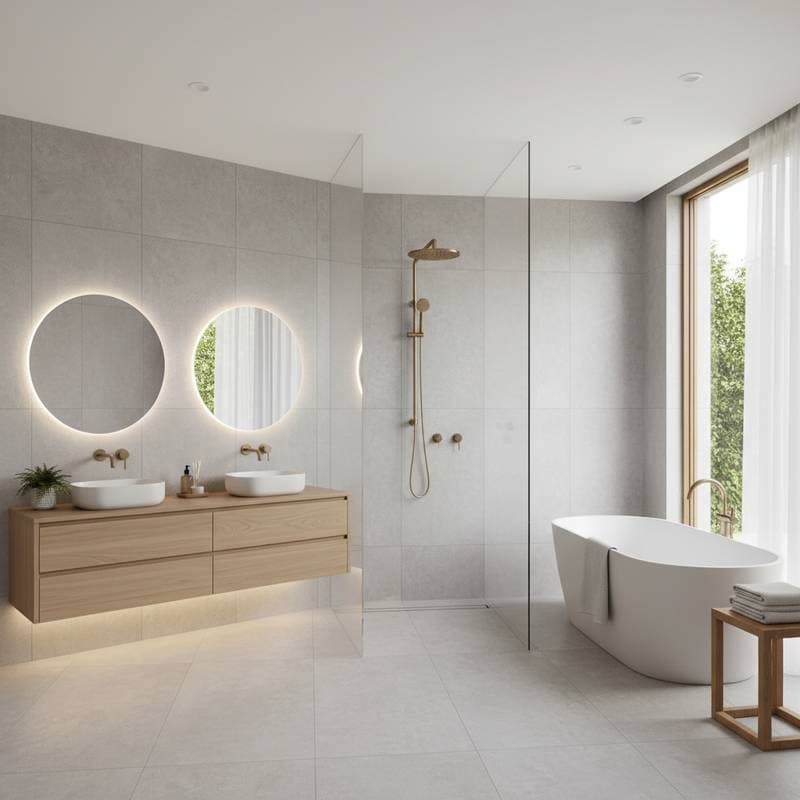Dark Academia Design Enhances Home Resale Value by 11 Percent
Homeowners adopting the dark academia aesthetic experience a tangible uplift in property worth. This style features deep, moody colors, antique-inspired finishes, and opulent materials that evoke a sense of enduring craftsmanship, seclusion, and refined elegance. Real estate data indicates an average 11 percent premium on resale prices for homes with these elements, particularly when finishes demonstrate high quality and design layers create depth.
Buyers gravitate toward spaces that suggest intellectual depth and cozy intimacy. The trend aligns with a growing preference for homes that prioritize personal sanctuary over fleeting modern minimalism. Implementing this look requires careful planning to maximize both visual impact and financial return.
Key Cost Considerations
Budgeting accurately ensures the project aligns with resale goals. Costs vary based on scope, location, and material choices, but understanding breakdowns helps homeowners make informed decisions.
1. Materials Selection
Dark academia emphasizes sensory appeal through varied textures and tones. Allocate $4 to $8 per square foot for premium paints in matte finishes or intricate wallpapers with subtle patterns. Custom wood paneling or integrated shelving demands $25 to $75 per square foot, depending on wood type like oak or walnut. Incorporate accents such as natural stone countertops, brass hardware, or leather upholstery to build layers of richness, though these selections elevate overall expenses.
2. Labor Expenses
Skilled tradespeople command rates of $50 to $120 per hour, influenced by regional markets and project complexity. Intricate tasks like installing ornate molding or bespoke cabinetry extend labor hours significantly. For a standard room transformation, anticipate 20 to 40 hours of professional time to achieve seamless results.
3. Lighting Enhancements
Effective illumination defines the aesthetic's mood. Budget $400 to $1,500 for installing statement fixtures, such as brass pendants or wall-mounted sconces, along with dimmer switches and minor electrical modifications. These upgrades prevent spaces from feeling overly dim while highlighting architectural details.
4. Furniture and Decor Investments
Sourcing pieces that fit the theme involves selecting vintage-inspired items or high-quality reproductions, priced from $300 for a simple armchair to $5,000 for a custom leather sofa. Complement with textiles like velvet curtains or wool rugs, and curate artwork or bookshelves to reinforce the scholarly vibe. Prioritize durable options that withstand daily use.
5. Contingency Planning
Reserve 10 to 15 percent of the total budget for unforeseen issues, such as structural repairs in historic properties or updates to outdated wiring. This buffer maintains project momentum without compromising quality.
DIY Approaches Versus Professional Services
Balancing personal involvement with expert input optimizes both cost and outcome. Evaluate capabilities against project demands to decide the best path forward.
Suitable for DIY Efforts
- Applying paint or wallpaper to one room, using drop cloths and steady hands for even coverage.
- Arranging open shelving with curated books, brass candlesticks, and layered fabrics to establish ambiance.
- Swapping basic overhead lights for adjustable floor lamps or table models that plug into existing outlets.
These tasks suit those with basic skills and allow experimentation without major financial risk.
Best Handled by Professionals
- Fabricating and fitting custom millwork, such as paneled walls or recessed bookcases, for structural integrity.
- Handling electrical work for recessed lighting or integrated sconces to comply with safety codes.
- Altering flooring with dark-stained hardwoods or adding crown molding that requires precise measurements.
Associated Risks and Requirements
The risk remains moderate, as imperfections in dark-toned applications become prominent under scrutiny. Inadequate lighting may shrink perceived room size or create harsh shadows. Essential skills include steady application techniques and basic carpentry; tools encompass painter's tape, high-quality rollers, a stud finder, spirit level, handsaw, dust masks, gloves, and safety goggles for dust-generating activities.
Upkeep and Protection Strategies
Sustaining the dark academia allure demands consistent care to preserve its polished appearance. Dark surfaces accentuate everyday wear, so proactive measures extend longevity.
- Conduct weekly dusting on horizontal surfaces like shelves and moldings using soft microfiber cloths.
- Apply quarterly conditioning treatments to wooden elements, such as cabinets and furniture, with natural oils to prevent drying.
- Refresh paint touch-ups every two to three years, matching original shades for uniform depth.
Contractor warranties typically cover workmanship for one to three years; retain product specifications and color formulas for straightforward maintenance. Opt for mild, pH-neutral cleaners and position furnishings away from direct sunlight to minimize fading on fabrics and walls.
Implementing Dark Academia Effectively
This design philosophy elevates property appeal by fostering an environment of warmth, introspection, and sophistication. Homebuyers respond to the curated narrative it conveys, distinguishing listings in competitive markets.
Begin with a targeted space, such as a home office, formal dining area, or library nook. Select a base color like charcoal gray or forest green in a low-sheen finish, integrate multi-level lighting from ambient sources to task-oriented lamps, and introduce tactile elements like embroidered throws or carved wooden accents. Observe shifts in daily comfort and atmosphere to refine subsequent expansions.
For imminent sales, emphasize photogenic rooms where the style shines through balanced exposures. Soft, diffused light in images accentuates textures without overwhelming darkness, drawing viewer interest.
Practical Steps Forward
- Establish a detailed budget and define desired quality tier, from basic updates to luxurious overhauls.
- Book tradespeople well in advance to align with timelines and avoid seasonal delays.
- Procure fixtures, paints, and fabrics prior to any disruptive work to ensure continuity.
- Document transformations with high-resolution before-and-after images to support valuation claims during resale.
Executed with precision, dark academia transforms living spaces into enduring assets, blending contemporary relevance with classic poise while safeguarding against design obsolescence.









